carla
Using Real-Life Clients in the Classroom
On 2/24/19 at 1:15pm, I presented at the North Carolina Community College Fine Arts Conference with the Session Using Real-Life Clients In The Classroom at the Meroney Theater in Salisbury, NC. This was co-presented by Carla Osborne of Wake Technical Community College
Using Real-Life Clients in the Classroom
At this event, we discussed the ability to work with clients in our classrooms, from beginning to end. This process included setting out the fear involved with



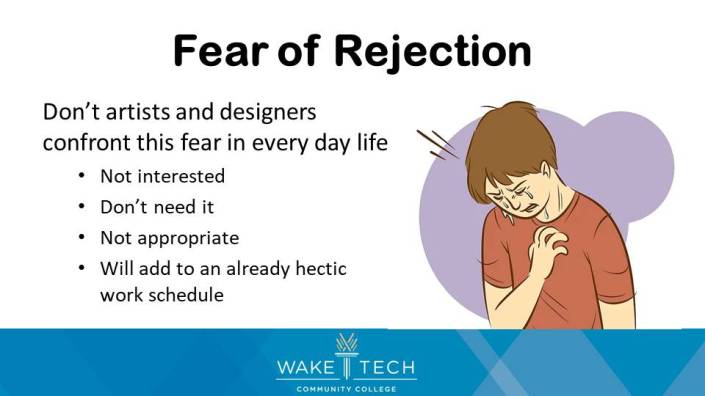
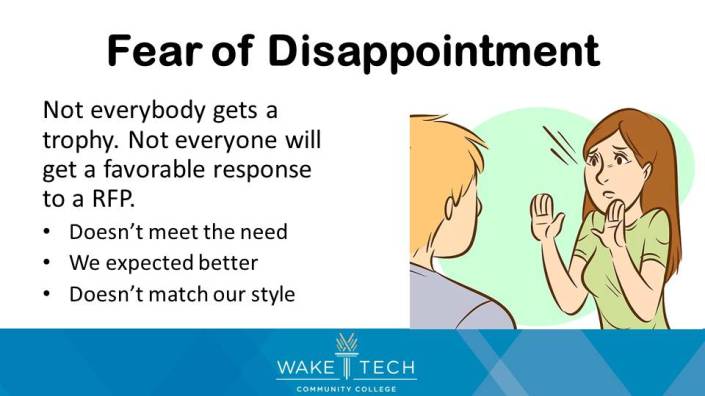

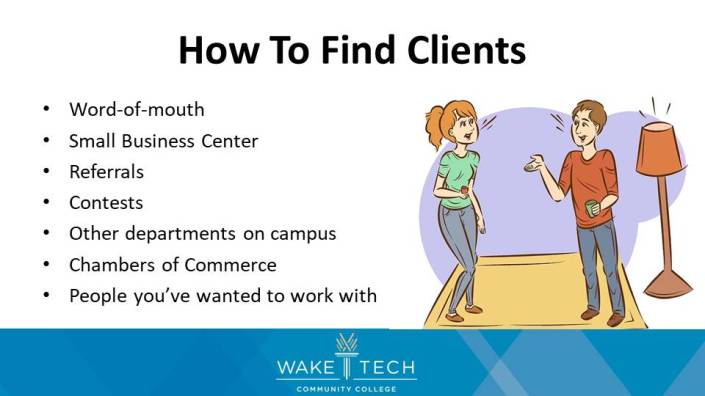








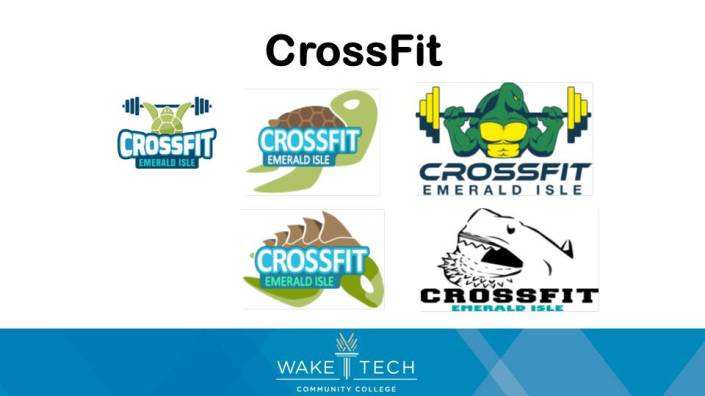






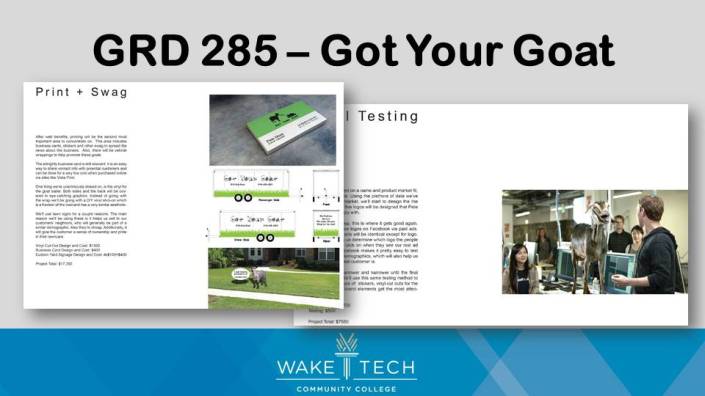
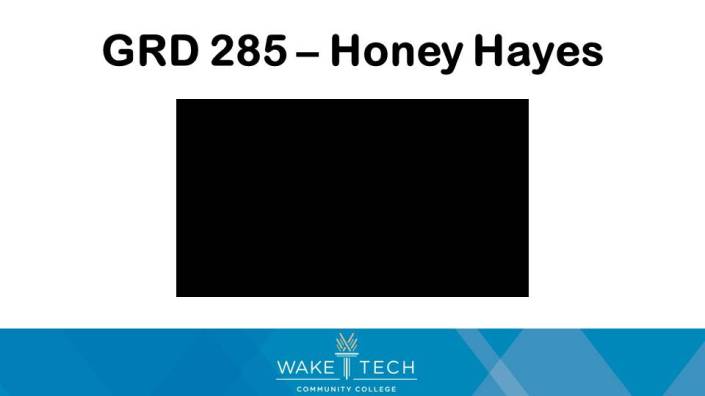














you for attending our presentation this afternoon. I’m attaching the videos that were in the presentation with a short description:
Baking and Pastry Arts Introductions
Since the student chefs are on another campus, this was our way of introducing them to the graphic design students:
Client/Media Relations – Summer Session 2017
We have fun in our department and for this video we roped in one of our Networking instructors as the client:
Client/Media Relations – Summer Session 2018
For this video we recruited a theatre student from NCSU to play the part of the client for Beet Box:
Design Apps III
In this short video Julie Evans introduces the rebranding assignment for Joe Van Gogh
And here’s the interview with the owner:
We hope you found a few tips you could implement in your own classes. Please reach out if you have questions or if you would like to share your experiences with working with clients in your classes.
Taking Your Seated Classes Online: An easier transition than you think
On 3/6/19 at 9:00am, and then again at 10:30am on 3/8/19 I presented at the North Carolina Computer Instructor Association Conference Session Taking Your Seated Classes Online at East Carolina University’s SCITech Building in Greenville, NC. This was co-presented by Tyler Dockery and Carla Osborne of Wake Technical Community College.
Taking Your Seated Classes Online:
An easier transition than you think




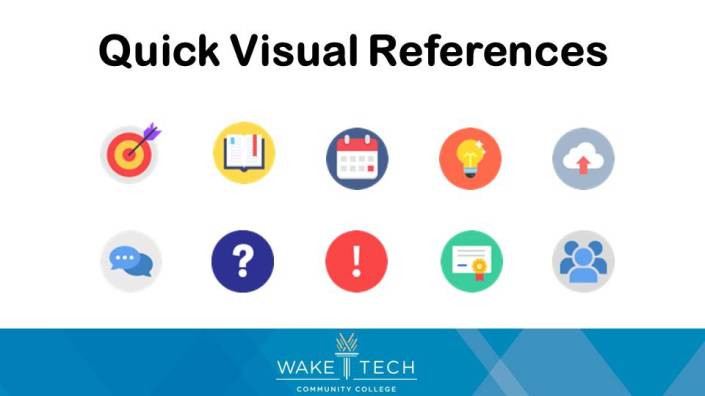



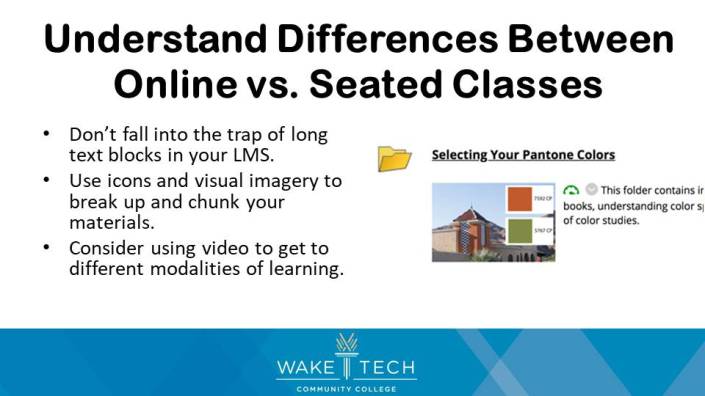











Q&A
How can you handle Attendance in the online environment?
Since students in an online environment might login and logout without contributing and demand that they are counted as attending, we suggest working differently. Base your attendance on turning in all work for the week. Since students have 7 days to complete assignments and materials, failing to present all or part of the course materials is a conscious choice on the part of the student.
If a student turns in all assignments and participated in discussions (regardless of grade), mark them as attending. Failing to complete one or more item in the week deserves a tardy.
What if you do not have ZOOM
Zoom is a free technology, and it allows you to record up to 40 minutes in the free version. Some people use Microsoft Teams, which also has video content. I have access to MS Teams, but honestly I don’t have as much experience with teams to know how it works.
What if you have good content, but its not Closed Captioned?
Some people find they can reach out directly to the video owner and ask for them. On youtube, you can ask the owner to open Community Contributions, and allow you to add in the captions that you’d like, but you can also use https://amara.org to create a closed caption overlay of the original video without breaking copyright. You will have to caption it yourself, but its a small price to pay for good content.
How do you determine the first dates in your classes?
At Wake Technical Community College, we have a course entry quiz which must be taken. The quiz is set for adaptive release, and once the quiz is taken, the plagiarism agreement is shown. Once the plagiarism agreement is submitted, then students can enter the class. This is not used everywhere though.
Some school use the first assignment submitted as the entry date, but this causes a great deal of work on the part of the teacher, hunting down student by student in several areas just to get an answer. One instructor noted that she got tired of hunting and created her own entry material. Several other teachers followed her path once she displayed how easily it could be used.
Unlimited and Unstoppable Student Success
On 3/7/19 at 3:15pm, I attended the North Carolina Computer Instructors Association Conference Session Unlimited and Unstoppable Student Success at the SCITECH Building at East Carolina University in Greenville, NC presented by Jill Staut with Cengage
This was another infomercial session. This room had 10 people in it: Myself, another design instructor- Carla Osborne, an older instructor, and 7 younger women clustered next to the podium.
As soon as they flashed the first slide, I made sure to raise my concerns with my coworker- this would be an infomercial session for Cengage Unlimited, which we did not use. As the session began, I quickly pointed out that we taught Advertising & Graphic Design. We did not teach or use Microsoft office products or any testing or certifications. We did not use CompTIA, and also that we would have to be leaving the session early. I also quickly asked: Is there anyone else in here who does not work for Cengage?
No one raised their hands. It was 2 non-users, 7 Cengage employees, and a woman who identified herself as the mother of the presenter.
They were nice enough to rush through a portion of the presentation to point out that there were some small lectures on building a resume. Then the presenters mother asked if she could hear the whole presentation because she really wanted to hear the whole presentation.
I took the following notes:
Cengage Unlimited is an online book subscription model moving from book ownership to access via internet and digital access. 73% believe that access to their book is important and 83% felt that accessibility in the book is important.
Costs are roughly $119.99/semester, $179 per year, $239 for two years. Textbook rental is available on top of that for $8, and can purchase the book after renting it, but the book price cannot be quoted. 1yr after the subscription is over the book stays available online.
These materials are built around career center materials including softskills. We had to leave quickly, but it was a long presentation with little or no relation to me.
We do not use Online textbooks. Some students do not have access to reliable internet, and the book fails. They cannot compare 2 electronic books to cross-reference, and the book fails. They cannot use the book without power, internet, or in all locations. I wish them the best of luck with it.
Great Teacher’s Conference Keynote
On 11/10/18 at 8:55am, I attended the Great Teacher’s Conference Opening Keynote at the Rizzo Center in Chapel Hill, NC presented by Wake Technical Community College
Great Teacher’s Conference Keynote
3rd annual Kelly markson, caralyn house, meghan macintyre, alison consol, lead coordinator from RTP Campus.
After a short Intro with our group facilitators and team members, we began the discovery process. We paired up with one another based on our years of experience. We began by creating a line with members at one end (half a year) and in the other end with the longest teachers (27.5 years!). We then paired up. Rather than folding the line in half, in a method similar to DNA replication, the line split and moved in opposite directions around the room, meeting again on the far side of the room. Both halves of the line met in a handshake, reconnecting to learn about one another. My partner was Mark DeCain.
 Mark DeCain
Mark DeCain
After getting to know one another, we then had to introduce each other in a fashion similar to a tweet format in 160 characters.
Mark has my same birthday. His tweet intro was “Tinkerer, Father, Insatiably Curious.” My introduction was “Father, Standard Nerd, No Hobbies”. We later Learned that our partners would then be our lunch dates.
We are a very diverse group on individuals, and have a lot to learn about one another over the next two days. We were encouraged to turn off and put away our cell phones, and to visit the reading library at the back of the classroom. We were also further encouraged to take notes between sessions in addition to the materials in session.
Learn from one another.
We’ll have a final examination at the end, and we’ll want to jot down “which things make a great teacher” so you can use that to complete your final exam
Great Teachers
David Godfrey started in the 1970. He did not know how to teach effectively and he has built a program like this to learn more. It is all over the nation, and has been adapted to an international movement. The Council of Excellence was charged by Bryan Ryan to “increase excellence” at the college. The Great Teachers Conference was an existing item that they visited in 2016 and found how excellent the idea was. This is the third annual seminar, and is funded moving forward for several years. This “energizes faculty” as noted by dr. Gayle Green.
Teaching is difficult and you’ll only learn as set of working best practices from one another. This conference is for teachers only, those down in the trenches. Experts are not invited. They are not welcome here. The keynote today is not a single idea. The power is in diversity. We’ll be kicking around outside of our departments. We have Professional Development to learn different ideas, but we can use this opportunity to get to know a larger more diverse group of people within the school, and get to know them better.
You Are Encouraged To Write Thank You Letters.
While we are here, we have been encouraged to think deeply about our situation, our performance in the classroom, what we’ve learned while we’re here, and what we’ll be able to bring back to the classroom. We are also encouraged- if we feel the spirit- to write letters if we like it. It can be forwarded on, compiled, etc. to the powers that be which make this a reality. They appreciate the feedback and this really keeps the conference going.
Less is more.
The following was given to us from Jason Whitehead
“There is no pre-planned agenda. It is made as simple as possible so that we can have a flowing agenda. There is no “this is what you need” keynote. It has to be uncovered as you go. We’ll let you know where to go and what you’ll do. Food is here, rooms are here. How can we teach a little bit made well? If we all increase a small amount each week, we’ll do better.
“This seminar is about you, and every one of us has their own flavors. Pick and choose. Today we’ll share our innovations, lunch will follow at 11:30 in Debose Hall, and then back here at 12:30pm. Tonight we’ll be working on tricks of the trade, but for now, lets live in the moment.
“We come from different parts of the college, but we can share ideas, stealing like a ninja. Adjust ideas to share in your class. There is NO need for humble apologies. We’ll run in 10 minute increments, so be ready to talk and listen.”
Our Commandments:
- Thou shalt provide equal time- if you drone on, shut up. You can always continue conversations with others. Talk often, but do not dominate.
- No whining, griping, or telling war stories. Whining is complaining, griping is when two people are complaining together. War Stories are told trying to outdo one another.
- Thou shalt mutually enforce these commandments. We police ourselves. Don’t take things personally.
Closing
Remember, this conference is about you. Our facilitators will be doing the listening and not talking. You cannot listen and talk at the same time. They are listening, teachers should be talking and discussing. Don’t engage the facilitators, focus on the groups and group members.
Who Put The “Copy” In Copyright?
At 3:00pm on 3/22/2018, I presented Who Put The “Copy” In Copyright?, and Co-Presented with Carla Osborne, at the 2018 North Carolina Computer Instruction Association Conference in At Asheville-Buncomb Technical Community College in Asheville, NC.
Who Put The “Copy” In Copyright?
In our presentation, we discussed the history of copyright as well as current methods, issues, and solutions for teachers. Along the way we answered a fair amount of hefty questions, and afterward we had a nice question and answer session with recipients.
A Quick History of Copyright
- Gutenburg Press and Angry Monks
- 1710 Copyright Act: The Statute of Anne
- 1790 First Copyright Law: Article 1 of the US Constitution
- 1976 The Copyright Act: What we know today
- DMCA: Digital Millennium Copyright Act
 There are three types of formalities when it comes to Federal Copyright law: notice, deposit, and registration. Deposit and registration are the things that give copyright owners the ability to enforce a copyright in court. Notice is important because people erroneously think the absence of a copyright mark is the absence of ownership, therefore copyright protections would not apply.
There are three types of formalities when it comes to Federal Copyright law: notice, deposit, and registration. Deposit and registration are the things that give copyright owners the ability to enforce a copyright in court. Notice is important because people erroneously think the absence of a copyright mark is the absence of ownership, therefore copyright protections would not apply.
If a work was published before 1978 (when the 1976 Copyright Act took effect) the work was subject to common law and federal copyright protection. This meant that if the work was required to have a copyright notice affixed if they were published. Unpublished work was protected by common law and if the work was published without “proper” copyright protection, that meant the work entered public domain. In short, there were a lot of formalities that could be misunderstood or misused.
Why Is Copyright Important?
More importantly:
Why do we have to learn about this stuff?
 But your honor, if you take away our right to steal ideas, where are they gonna come from?
But your honor, if you take away our right to steal ideas, where are they gonna come from?
Foster Ideas While Protecting Your Rights
- Knowing about copyright helps you know your rights,
- What material is available to you,
- How to credit writers, photographers and other artists,
- How to be ethically responsible,
- How not to infringe on existing copyright. Not knowing copyright laws and restrictions doesn’t absolve you from breaking the law.
How Copyright Might Affect You
Things that determine whether or not you can copyright a work
 1.Eligibility (Is your work eligible for copyright in the first place?)
1.Eligibility (Is your work eligible for copyright in the first place?)
2.Fixation (Not in a perverted sense — Is the work tangible?)
3.Human Authorship (Really, it has to be created by a human. No joke)
4.Copyrightable Subject Matter (Copyrightable material has to fall into one of several categories)
5.The Originality Requirement (Originality is “the bedrock principle of copyright”)
6.Independent Creation (No copy cats!)
7.Creativity (Which should go without saying)
What Is Taken Into Account
- They do not consider the potential for income, whether the work is a novelty, aesthetic or artistic values, symbolism, or the look and feel of a work.
- “Authorship” is the term used to describe material considered for copyright, even if the work isn’t written. Authorship is established by considering if a work is original and if it’s tangible.
- It’s easy to determine if something is fixed or tangible. It’s harder to determine if something is original.
- If you have a cool idea, but you don’t create something tangible, you can’t copyright that idea.
- Conversely If you do create something tangible that conveys your idea and someone says, “Hey! I had that idea!” they’re cannot claim copyright.
- Fixation determines if and when copyright is established. Is it possible for two or more very similar ideas to be created by different designers? Of course, but first it must be established whether or not these ideas are truly original.
- If they are, then the moment they were created is when they become copyright protected
12 Things You Cannot Copyright
1.Works that have not been fixed: a work communicated solely through conversation that has not been filmed, recorded, written, or transcribed.
2.Works that lack human authorship (We weren’t kidding about this.): paintings done by cute kittens for an SPCA fundraiser. Another example is reducing or enlarging the size of an existing piece of art using a machine or mechanical means (because the robots aren’t human and haven’t taken over. Yet.)
3.Ideas, procedures, processes, systems, methods of operation, concepts, principles, or discoveries: This is a biggie. Just because you have a great idea doesn’t mean that idea is protected while it’s still rolling around in your noggin. Make it tangible if you want it copyright protected as intellectual property.
4.Facts: Since they aren’t generated by human authorship. The jury is still out on facts by animals. However, if you (not your dog) write a book using facts or about facts, that work is copyrightable.
5.Wait for it…. Typeface and Mere Variations of Typographic Ornamentation: Yes, the use of “mere” is slightly insulting, since designers appreciate well-designed type, but copyright doesn’t cover typefaces or calligraphy. But, if you create a pictorial work or graphic work using calligraphy that is sufficiently original, it may be eligible for copyright protection.
a)Format and Layout: Verbatim, from the Compendium of the U.S. Copyright Office Practices, Third Edition 3 (E):
- As a general rule, the U.S. Copyright Office does not accept vague claims of “format” and/or “layout.” The general layout or format of a book, a page, a slide presentation, a website, a webpage, a poster, a form, or the like, is not copyrightable because it is a template of expression. These terms should be avoided and, if used, will be questioned by the registration specialist.
But, wait. Sometimes there are exceptions:
b)Copyright protection may be available for the selection, coordination, and/or arrangement of specific content, such as a compilation of artwork or a compilation of text, provided that the content is arranged in a sufficiently creative manner. However, the claim would be limited to the selection, coordination, and/or arrangement of that specific content, and it would not apply to the format and layout itself.
6.Mere Copies: There’s that word again. But in this case it applies. If it’s a copy, it’s not original, which defeats the point of copyright protection. Examples include photocopies and scans of photographs or exact copies of artwork.
7.De Minimis Authorship: This just seemed like a fun term, so we threw it in there. The term roughly translates to “the law does not take notice of very small or trifling matters.” The short version is, “This is not original enough to be worth the trouble.” Examples include touching up an old photograph in Photoshop without adding noticeable artistic touches, or using a public domain photograph to make one of those inspirational posters that were big in Stephen Covey’s heyday. Ironically a parody of such a poster would be protected under copyright.
8.Words and short phrases: You can’t copyright a name of a person or business, slogan, title, domain name, or the name of a product of service, not matter how cool or outlandish it is.
9.Familiar Symbols and Designs: Among other things, “Well-known and commonly used symbols that contain a de minimis amount of expression or that are in the public domain, such as the peace symbol, gender symbols (♀ ♂), the symbols for “play, pause, stop, forward, back,” simple emoticons such as the typical smiley face (☺), or the like. This is something to keep in mind when you’re creating social media campaigns.
10.Mere Variations of Coloring: There’s that word again! Making something a different color isn’t going to make it original enough to qualify for copyright protection.
11.Government Works: There are some exceptions, but if a work is created for the U.S. Government, it cannot be copyrighted. However, this doesn’t mean that if you use a government work you shouldn’t cite the source. Copyright and credit are two different things.
12.Works in the Public Domain: Works can be in the Public Domain for a variety of reasons (lack of registration, expired registration) but they may not be copyrighted. However, a derivative work containing public domain material may be registered if it contains a sufficient amount of original authorship. What qualifies as “derivative work”? We’re glad you asked. That will be covered shortly.
Your Intellectual Property
Your work is considered, by law, copyright protected from the instant it is fixed, or tangible, if it’s eligible for copyright. While that sounds easy enough, proving that in court is an entirely different matter. There are some things you can do to protect yourself and your work:
1.Always include copyright information on your work, including sketches, with the following:
Copyright/Copr./© + first date of publication + name of the copyright owner
For example, © 2017 Your Name
2.Keep good records, both in digital and paper form.
3.Register your copyright with the Copyright Office either online or by filing a paper application. This is the method that puts the burden of proof on the infringer, should a copyright be legally contested.
Your work is considered, by law, copyright protected from the instant it is fixed, or tangible, if it’s eligible for copyright. While that sounds easy enough, proving that in court is an entirely different matter. There are some things you can do to protect yourself and your work:
Develop workflow habits, such as using the metadata options in Adobe Photoshop and Bridge, to add copyright information. Integrate copyright into project management.
OPP — Other People’s (Intellectual) Property
If you do not see a copyright listed with a photo or illustration, that doesn’t mean it is free to use.
It’s your responsibility to make sure you are not using copyrighted works without the permission of the copyright holder.
Fair Use And How To Play Nice
The concept of Fair Use is not to circumvent copyright requirements, but to allow use of copyrighted works for educational and informational purposes. Be warned that Fair Use isn’t carte blanc. You have to consider four components when deciding whether an image or graphic falls under the copyright exception of Fair Use:
1.the Purpose and Character of the use; including whether such use is of a commercial nature of is for nonprofit educational purposes;
2.the Nature of the copyrighted work;
3.the Amount and Substantiality of the portion used in relation to the copyrighted work as a whole; and
4.the Effect of the use upon the potential market for or value of the copyrighted work.
The questions are posed in sequential order. All four factors must be weighed in your decision of whether or not to consider use of copyrighted material.
Leibovitz v. Paramount Pictures Corp.
Vanity Fair cover using Leibovitz’s photograph of Moore is on the left. On the right, Nielsen’s head is superimposed over the body of a model hired by Paramount. Leibovitz sued because she felt it diminshed her work and her hirability because people might think she supported the movie and worked on its active marketing. Judges ruled that no one would seriously think that this was male actor Leslie Nielsen, and the case was thrown out.
The Barack Obama “Hope” poster is an image of Barack Obama designed by artist Shepard Fairey. On February 29, 2012, Fairey pleaded guilty in a New York federal court to destroying and fabricating documents during his legal battle with the Associated Press.
Sources You Can Use
If you post it, they will come (and download it).
How can you find images that don’t infringe on copyright?
- A good place to start is Creative Commons, which was created in the spirit of creative collaboration.
- You may also go straight to the source and ask the copyright holder for permission to use, which may include a request for payment to do so.
- Public domain sources offer a surprising number of high quality images and graphics.
If you choose to purchase images through a stock website, read the fine print. Royalty free doesn’t mean no strings attached, more likely you’re purchasing a limited license to use that image. Some stock photography sites limit the use to certain mediums, while others will not allow more than a specified number of copies to be made.
A Word About Type
AIGA Professional Practices in Design gives the following advice:
- Make sure you have the license to use fonts.
- If you want to use a font that isn’t installed on your computer, you must ensure that you have a license to install the font, or else acquire a license to do so.
- Contact the type foundry or supplier of the font if you have questions.
- Don’t lend or give a font to others to use.
Giving Credit Where Credit Is Due
Unless it is expressly stated that no attribution is needed, you should always credit the creator of any work you use. The credit should be given in such a way that it’s reasonably easy to read. If you’re not sure about how the credit should read, double check with the copyright holder.
Creative Commons has a tiered licensing system and detailed instructions on how to credit work.
- https://creativecommons.org/use-remix/
- https://wiki.creativecommons.org/wiki/Best_practices_for_attribution
Licenses From Least Restricitve to Most Restrictive
 Attribution CC BY
Attribution CC BY
This license lets others distribute, remix, tweak, and build upon your work, even commercially, as long as they credit you for the original creation.
 Attribution-ShareAlike CC BY-SA
Attribution-ShareAlike CC BY-SA
This license lets others remix, tweak, and build upon your work even for commercial purposes, as long as they credit you and license their new creations under the identical terms.
 Attribution-NoDerivs CC BY-ND
Attribution-NoDerivs CC BY-ND
This license allows for redistribution, commercial and non-commercial, as long as it is passed along unchanged and in whole, with credit to you.
 Attribution-NonCommercial CC BY-NC
Attribution-NonCommercial CC BY-NC
This license lets others remix, tweak, and build upon your work non-commercially, and although their new works must also acknowledge you and be non-commercial, they don’t have to license their derivative works on the same terms.
 Attribution-NonCommercial-ShareAlike CC BY-NC-SA
Attribution-NonCommercial-ShareAlike CC BY-NC-SA
This license lets others remix, tweak, and build upon your work non-commercially, as long as they credit you and license their new creations under the identical terms.
 Attribution-NonCommercial-NoDerivs CC BY-NC-ND
Attribution-NonCommercial-NoDerivs CC BY-NC-ND
This license is the most restrictive of the six main licenses, only allowing others to download your works and share them with others as long as they credit you, but they can’t change them in any way or use them commercially.
Infringement Happens. What’s A Teacher To Do?
Often infringement is born out of ignorance, not malice. That doesn’t excuse misuse, unauthorized use, or misappropriation. Regardless of intent, infringement constitutes plagiarism
Infringement Happens. What’s A Student To Do?
If you are suffering from copyright infringement, what’s the best course of action? There’s no quick and easy answer to that question.
It’s dependent on how well you’ve documented your work and whether or not you have registered, or are in the process of registering, your work with the Copyright Office. But make no mistake, if your work is in tangible form, your work is considered copyrighted.
Ask Permission, Not Forgiveness
It’s pretty much that simple.
If you seek permission and adhere to copyright guidelines, you’ll be in compliance. It’s much better to ask permission than forgiveness.
Sources To Explore
Copyright Law in a Nutshell, Mary LaFrance
Copyright.gov: Compendium: Chapter 300.
https://en.wikipedia.org/wiki/Digital_Millennium_Copyright_Act
2016 USCA National Distance Learning Week Virtual Conference, Tucker Taylor, Head of Circulation at Thomas Cooper Library, University of South Carolina, Aiken.
The Graphic Artists Guild Handbook: Pricing and Ethical Guidelines, 14th edition
The Copyright Book: A Practical Guide, Sixth Edition, William Strong
AIGA Professional Practices in Graphic Design
https://creativecommons.org/licenses/
https://en.wikipedia.org/wiki/Statute_of_Anne#cite_note-citation-1
The act is numbered as 8 Ann. c. 21 in The Statutes of the Realm (published 1810–25), based on the original Parliament Rolls; but as 8 Ann. c. 19 in Ruffhead‘s Statutes at Large (published 1763–65; and later editions), based on the copies of acts enrolled in Chancery. Both forms of citation are acceptable, and both are found in reputable secondary sources.
SafeAssign and other tools
What do you use to monitor copyright compliance? SafeAssign is a fine way of ensuring that materials are original- at least as much as can be. In some cases, a single student may copy their material from an internet source without quoting, and then we may find that numerous others would then copy off their paper, there are ways in which several students can cheat without all of them being caught.
Another University Issue
NC State was once found to be among the largest institutions with Video downloads from the internet. As a result of being outed, the school came up with a larger, more clear copyright statement on the footer on their web pages. While we’d all rather see this say “CAN I use copyrighted material” rather than “HOW CAN I use copyrighted material”, they’ve done a great job here.
Questions?
How To Teach Graphic Design Online
On March 9th 2016, I Presented to the NCCIA at 10:30am with Carla Osborne, MA and Julie Evans, Instructors of Advertising & Graphic Design at Wake Technical Community College, in RM235 in the 600 building at Rowan Cabarrus Community College in Salisbury, NC.

StepUpToADegree-GRD TeachingGraphicDesignOnline-PDF (1)
This session was set to be a slight scary one, but the attendees were nice, ready to ask and answer questions, and open to taking notes. Tee experience was very, very positive one. I believe we’ll be doing this again, and I find that these situations seem stressful on the outside, but once you begin… its just as easy as it could be.
This conference opened the door for me.I look forward to presenting more in the future.












You must be logged in to post a comment.